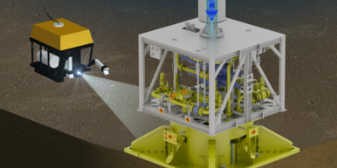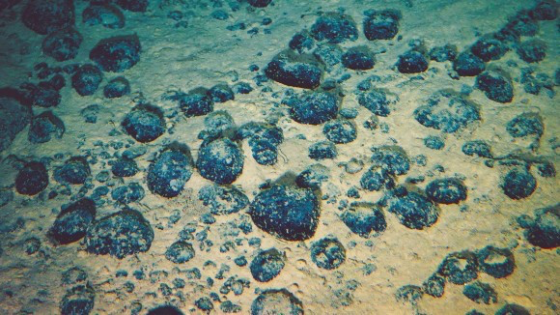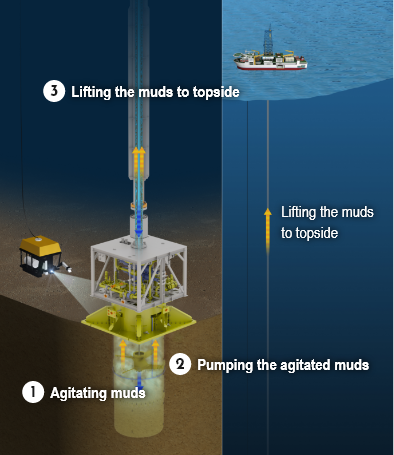

Rare-earth muds are pelagic muds made by accumulated remains of plankton in which a large amount of rare-earth is contained.
In the year of around 2010, they were discovered on the seabed, 6,000 m deep in the vicinity of Minami-Torishima Island, Japan.
17 types of metallic element are called as Rare-earth which consists of scandium, yttrium in Group 3 of the Periodic Table, and lanthanoids contained 15 elements including neodymium, dysprosium, cerium. These materials are indispensable for magnets for small motors such as hybrid cars and electric vehicles, solid electrolytes for fuel cells, and catalysts for automobile exhaust gas treatment. They are important resources for promoting low-carbon (zero emission) and carbon-neutral.
 Source:https://www.nature.com/collections/cacibafdga
Source:https://www.nature.com/collections/cacibafdga
Rare-earths exist in Japan's exclusive economic zone (EEZ), and their development is also important for Japan's resource security. Rare-earths collected from the seafloor are known to be clean resources that do not contain radioactive materials, unlike the rare-earth mining on land.
Under the SIP (Cross-ministerial Strategic Innovation Promotion Program) of the Cabinet Office, the Japan Agency for Marine-Earth Science and Technology (JAMSTEC) is developing the world's first technology to recover rare-earth muds from a deep-water of 6,000 meters, which is unprecedented in the development of deep-water oil and gas.
Toyo's Efforts
Toyo is engaging in the technology development for a system to recover rare-earth muds from 6,000 meters’ water depth using their accumulated technologies for oil & gas development and subsea. Specifically, we carried out basic engineering, detail engineering and manufacturing for a subsea production system to transform rare-earth muds at seabed, which is highly viscous and does not flow smoothly, into a slurry to pump them up on the ship.
The equipment was delivered to Japan and offshore verification tests were successfully conducted in fiscal year 2022.
 This is an image of subsea production system: 1) agitating muds, 2) pumping the agitated muds , 3) lifting the muds to topside. and then the system moves to other locations to recover more rare-earth muds.
This is an image of subsea production system: 1) agitating muds, 2) pumping the agitated muds , 3) lifting the muds to topside. and then the system moves to other locations to recover more rare-earth muds.
Reference Links:
1. An article depicted about TOYO’s efforts for rare-earths was published in the scientific journal “Nature”.
The article introduced future production system created by TOYO and TOYO’s activities to eye the world‘s first rare-earth subsea factory* .
* Subsea factory : a concept advocated by Equinor (former Statoil), a Norwayan major oil, gas and energy company, to locate onshore or offshore facilities (factories) on the seabed (subsea). Technology development to realize this concept is being promoted not only by Equinor but also by other E&P companies around the world.
2. SIP "Innovative Deep Sea Resource Research Technologies" Archive Video of the Reporting Committee
"Deep Sea Resource Research Technologies", provided by JAMSTEC on February 10th, 2023
※The rare-earth muds production system is introduced mainly at 1:05:05 to 1:07:50.

